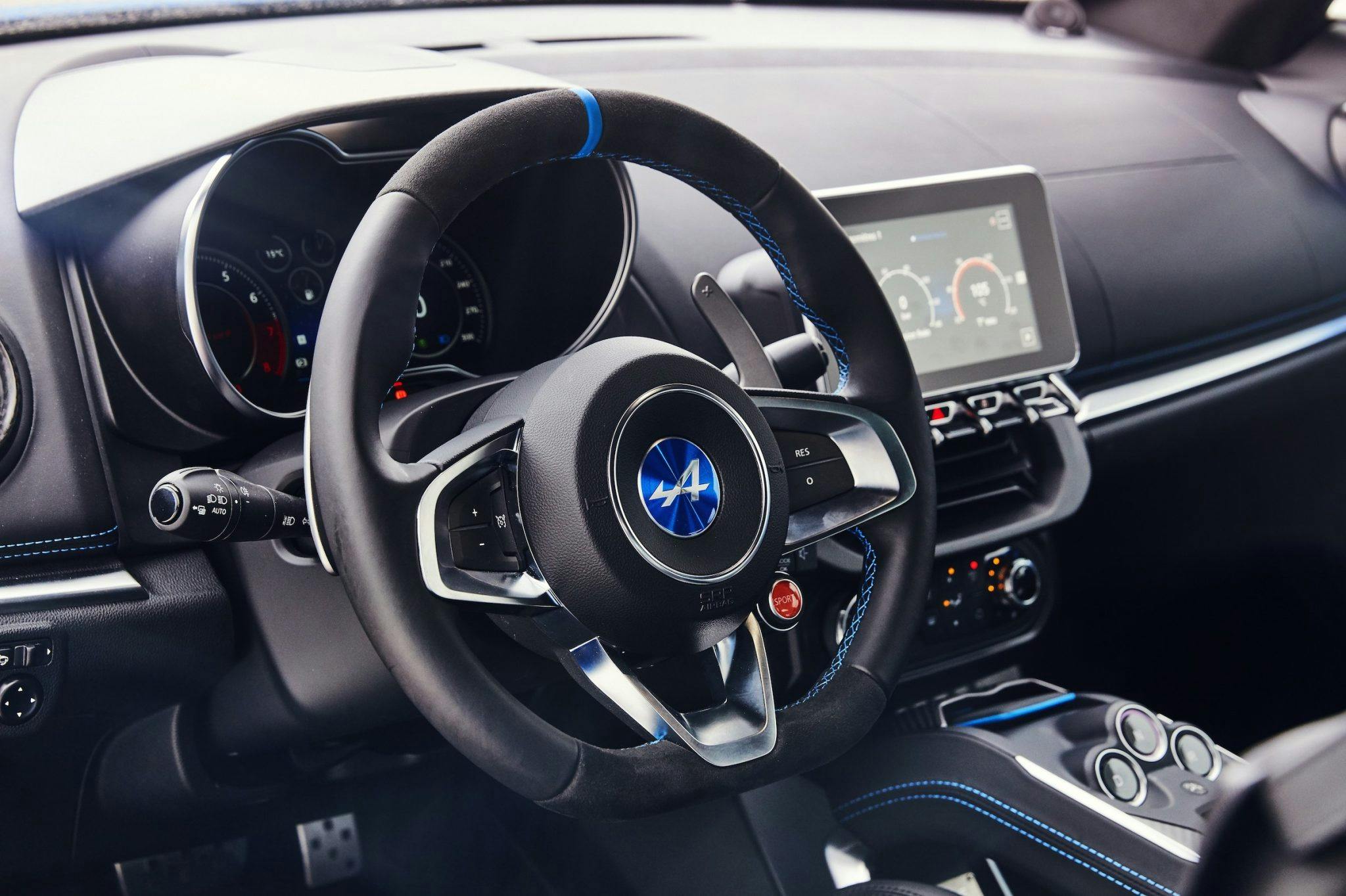Media | Articles
Numbers can’t explain the charm of this French featherweight

The future classic status of the Alpine A110 is effectively hidden in plain sight: it’s so obvious you just don’t see it at all. Because the modern A110 is small, not very fast, lacks a posh badge and is thought of—if thought of at all—as a car for autogeeks and nerds, it’s just not at the forefront of the public consciousness. But that’s a long old way from saying it’s invisible.
Among the self-appointed cognoscenti of the automotive world, few cars have made a greater impression in the last five years, and none with just a humble, 1.8-liter engine and less power than many a warmed-over hatchback. If I may consider myself among their number and if it is of interest, I am the co-founder of The Intercooler, which has been reviewing cars for four years and, to date, has given just one a ten out of ten rating. The Alpine really is that good.
But why? If you look at its power output or 0-to-62-mph time there appears to be nothing remarkable about it at all. The powertrain comes from a Renault Megane; on paper there’s no big deal about it. And that’s why we should all give thanks that no-one has yet developed an algorithm that allows computers to assess cars; if one did, it would surely give the A110 four out of ten at best and leave a note on its report saying “must try harder.”
The truth is that this is one of the most remarkable cars of the current generation. If you’re looking for an obvious reason for that, just look at its weight. An A110 Pure weighs less than 1100 kilograms (2425 pounds), and that’s not one of those sneaky “dry” weights with a lot of expensive lightweight options fitted, but as it drives out of a showroom with oil in its engine and fuel in its tank.
How did it get that way? First by being small, second by being made almost entirely of aluminium, third because it was designed by very, very clever people with an obsessional approach to making things lighter. So there’s all the stuff you’d expect—forged wheels rather than cast, lightweight bucket seats and so on—and then there’s the stuff you don’t, like a handbrake literally forged into the rear brake caliper instead of existing as a separate unit. There’s 2.5 kg (5.5 pounds) right there. The detail I appreciate most are the windscreen wipers, perforated not to save weight but to accurately mist water over the screen exactly and only where its needed. That allows a 1.5-liter washer bottle to do the same job as one holding 3.5 liters in a normal car, and that’s another couple of kilos.
Marketplace
Buy and sell classics with confidence
But actually there’s more to the A110 than just being light. It’s really small too. While a new Porsche 911 is over two meters (6.5 feet) wide, the A110 is less than 1.8 meters across the bows. Which means it can be threaded more easily and with greater confidence through the lanes, which means you can enjoy it not just more, but more often.

Even with that, however, all you have is the recipe for a compact, light, mid-engine sports car: It still needs someone who knows what they’re doing to make the most of it while putting it together. And, my goodness, the Alpine boys and girls knew what they were doing.
They decided right from the outset that having fun was far more important than going fast, and that making a car usable every day was a far more important than making one that’ll tear your face off with all the g force it can generate. So they gave it very soft suspension, but then controlled the body’s movement with expert choice and calibration of its dampers. The result: a car that rides beautifully, breathes with the road, and is enjoyable on the shortest journey and not just special occasions.
The irony is that, in the real world, this also makes the A110 far faster than you’d expect. Such is the confidence it imparts you can thread it through gaps that would make you throw out the anchor in a bigger, wider, heavier, more powerful supercar. Point to point on public roads, as opposed to the race track, it is a devastingly effective device. Four years ago I drove one back to back with a McLaren Senna across Wales and while the McLaren was more memorable, I actually enjoyed driving the little A110 more.
One more thing to consider. Because it’s not from a famous brand, isn’t very fast, and is not that powerful, the one thing at which the A110 has proved less than brilliant is selling. Now into its fifth year on sale in the U.K. there are little more than 600 registered to drive on our roads, which really isn’t very many at all.
Which means the A110 is rare and rapidly heading for cult status, in turn meaning the residuals are amazing: a friend of mine sold his recently because he has a baby on the way and got almost all his money back despite having done 17,000 miles in the car in three years.
And that’s why the A110 has future classic written all over it. Its charm may not be overt, but it is no less real for that, and once it’s under your skin, there it will likely stay for life.
Check out the Hagerty Media homepage so you don’t miss a single story, or better yet, bookmark it.

















In Australia the Alpine did not meet the required safety requirements and it was withdrawn from the market. All reports that I’ve read are very complimentary